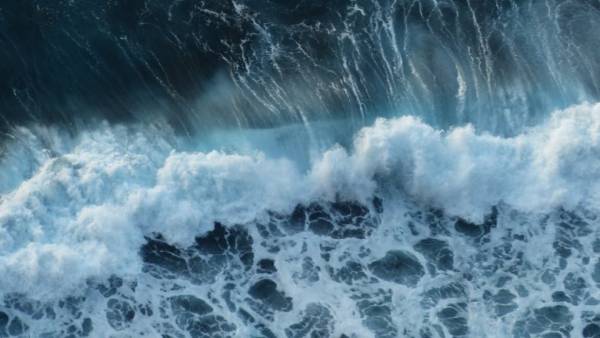Formed as waves in the ocean?
Meets Alex Alabuzhev, Phys. and mathematical Sciences, Professor of Department of theoretical physics, Perm state University.

Waves occur for various reasons: because of the wind, the passage of the ship, falling into the water of an object, the attraction of the moon, earthquakes, the eruption of an underwater volcano or landslide. But if the passing ship or the fall of the subject they are caused by the displacement of a fluid, the pull of the moon and Sun contributes to the appearance of tidal waves, and earthquake can cause a tsunami, with the wind more difficult.
Here is the movement of air — it has the chaotic eddies have a small surface and large in the distance. As they pass over a reservoir pressure decreases, and its surface is formed a bulge. The wind begins to push harder on her windward slope, which leads to pressure difference, and because of her, the movement of the air begins to “pump” energy into the wave. The velocity of a wave is proportional to its length, i.e. the longer the length, the greater the speed. Linked with wave height and its length. Therefore, when the wind accelerates the wave speed increases, hence increasing the length and height. However, the closer the wave speed to wind speed, the less energy can wind give a wave. If their speed are equal, the wind does not transmit the wave energy.
Now we shall understand how all waves are formed. For their formation corresponds to two physical mechanisms: gravity and force of surface tension.
When some of the water rises, the force of gravity tries to bring her back, and when it descends, it displaces the adjacent particles that are also trying to come back. The force of surface tension anyway, which way to bend the surface of the liquid, it works in any case. In the result, the water particles oscillate like a pendulum. They “infect” neighboring areas, and there is a surface traveling wave.
The energy of the waves occurs only in the direction in which the particles can move freely. On the surface this is easier to do than at depth. This is because the air does not create any limitations, while the depth of the water particles are in very cramped conditions. The reason is poor compressibility. Her waves can travel long distances on the surface, but quickly fade into the depths.
When the wind accelerates the wave speed increases, hence increasing the length and height.
It is important that during the wave fluid particles almost do not move. At great depths, their trajectory is circular, on a small — elongated horizontal ellipse. Due to this, the ships in the Harbor, birds or pieces of wood swinging on the waves, without actually moving on the surface.
A special type of surface waves are the so-called killer waves — a giant single wave. Why they are there, so still and unknown. They rarely occur in nature and cannot be modeled in the laboratory. However, most scientists believe that killer waves are formed due to a sharp decrease in pressure over the surface of the sea or ocean. But a more thorough study of them is found.